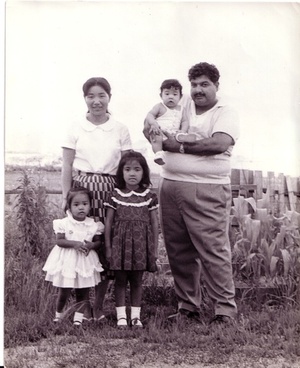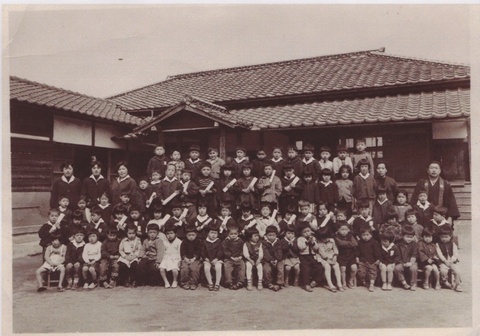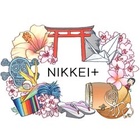During the war my father, Daniel Garcia (born Dec. 7, 1925 in Pasadena, CA), assembled shells onboard his ship to slam away at the Japanese installations. In Japan my mother, Yoshiko Fuchigami (born Feb. 2, 1930 in Atsugi), was assembling munitions to throw at the American invaders. Indirectly they were doing their damndest to kill each other. Having failed, the war over, they met, fell in love, and were married.
Their meeting came about via my grandfather. As a member of the Military Police, my father transported my grandfather, who was acting as a liaison between the local police and the military, back to his residence. During the ride my father turned on the radio to ease the discomfort of not having a shared language and located a station that played Japanese music. They must have had a good time because when they arrived at the house, my father was invited in and saw my mom for the first time.

Garcia family in Japan: Louise, Dorothy and Bob with Yoshiko and Daniel. (Photo courtesy of the author)
I was born in Japan the first of four children of that union. I was named Dorothy despite the fact that the “th” sound is unpronounceable to most native Japanese speakers.
Continuing in the same vein, two of my siblings were named Louise (after my grandfather Luis) and Rupert, both unpronounceable to Japanese mouths, but my mother did manage to give my sister and I Japanese middle names. Bob (not Robert!) was the one easy mouthful for mom.
I grew up “different,” and that’s what I was meant to be, as my mother later informed me that the sole characteristic that attracted her to my father was that the two of them would have children who did not “look the same as everyone else.”
In my Japanese kindergarten photo, I stand out with my round, brown face and “funny” hair. My classmates (as well as my siblings) were convinced I was an orphan.
I was raised by my Japanese grandparents and adoring aunt while my mother finished her studies. We had commissary privileges on the nearby naval base, enabling us to have products not readily available to most of our neighbors.
I have heard stories that one of the ways my obachan quelled rumors of my illegitimacy was to make certain everyone saw my cloth diapers hung out to dry on wash day. Apparently I was the only baby in the neighborhood indulged with this luxury and symbol of surrender which my oba turned into proof that I was being cared for by my absent sailor father. Upon returning, it is said that my dad provided treats for all the youngsters and threw what must have been an American spin on yakitori with a barbecue!
When I was five my family came to the United States from Japan. We flew on October 31, 1960—my mother and father, and my siblings and I wearing new clothes made by mom. Unbeknownst to all, Rupert was carried over in utero, the only one of us who can become a US president.
On board, our first experience of America was to don huge pointy hats and distribute to the passengers a bounty of candy, the likes of which I had never seen! We wound up with all of the leftovers and greedily ate as much as we could stomach. After crossing the international dateline and landing in Hawaii, the 31st began once again and the second leg of the flight began just as the first had, as if I was in Willy Wonka’s factory. Candy every day in the USA? I knew I was going to like this place.
Walking around during our layover in Honolulu, my sister disappeared, sending the entire terminal into a panic. The departure was held as my parents tried to decide what to do. Just like in the movies, Louise appeared from nowhere, completely enveloped in leis. Not only did we catch the plane, we were able to give armfuls of candy and leis to our new family in America.
We arrived in L.A. into the loving arms of Luis and Trinidad Garcia, my paternal grandparents. Since the school year had started my parents felt an urgency to have me immediately enroll in South Pasadena. This was despite my mothers concerns about California schools that she had read about the internment of the Japanese here. (Many years later, when we attended the exhibition of Executive Order 9066 at First Presbyterian Church in Pasadena, we saw for the first time the plight of Japanese Americans which she had read about years prior.) My parents then promptly departed with my siblings to Alameda where my father was stationed.
On Monday morning before the first day of school I sat down for breakfast with my Spanish speaking grandparents and had what I considered the most exotic meal I had ever seen—papas con chorizo and eggs!
© 2013 Dorothy Yumi Garcia




